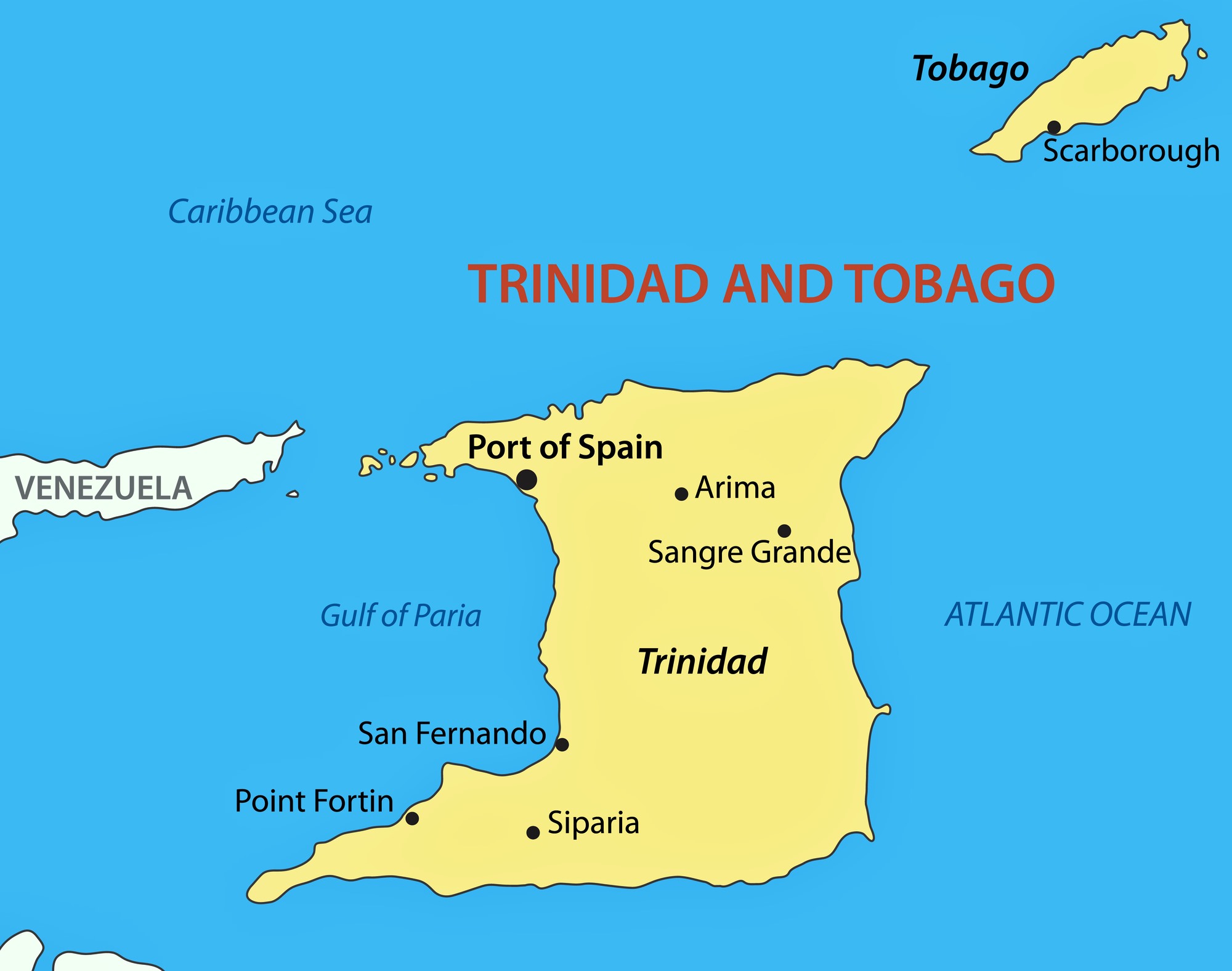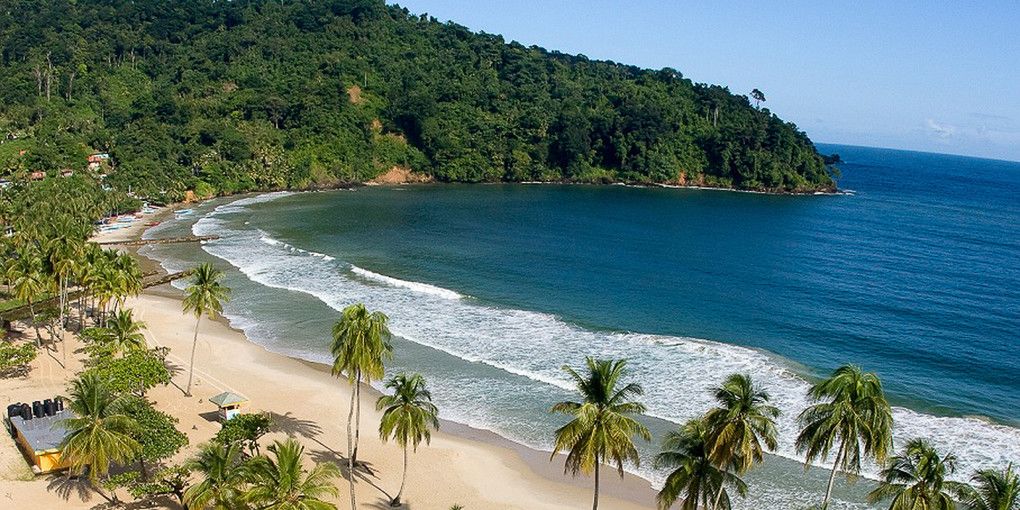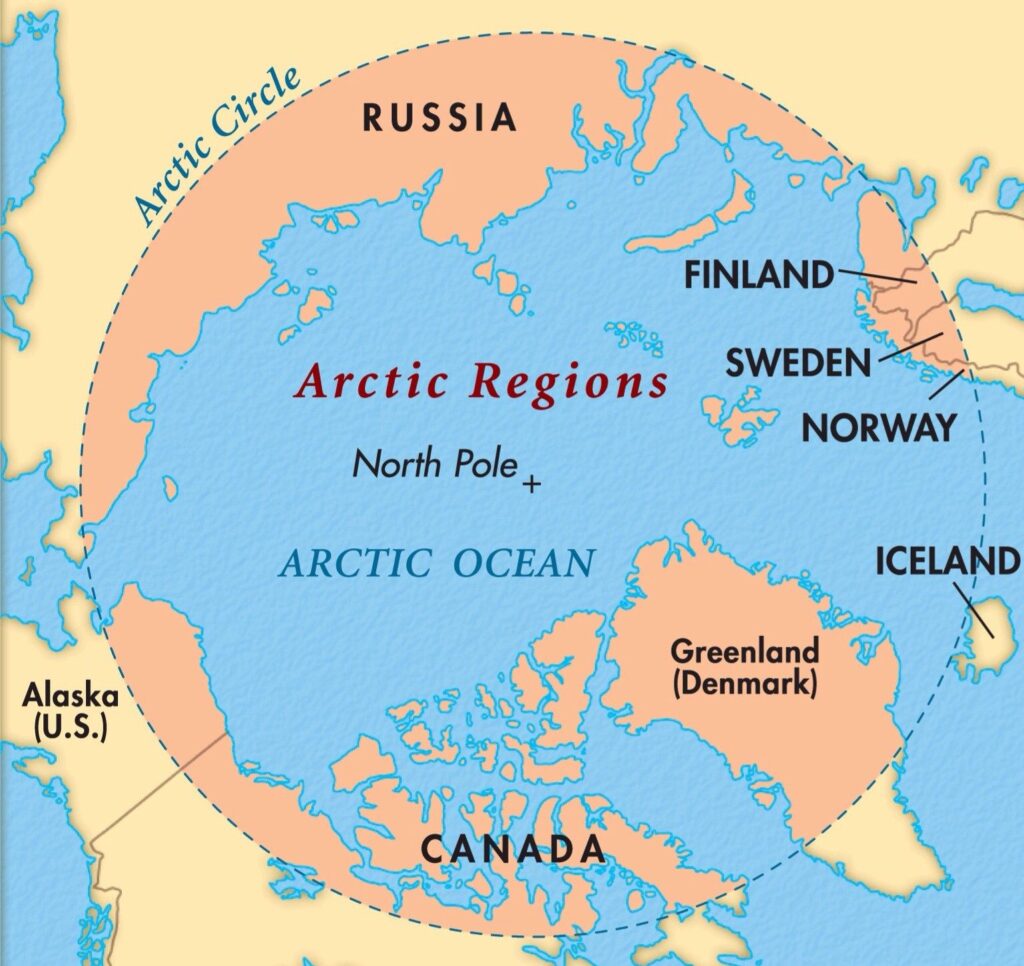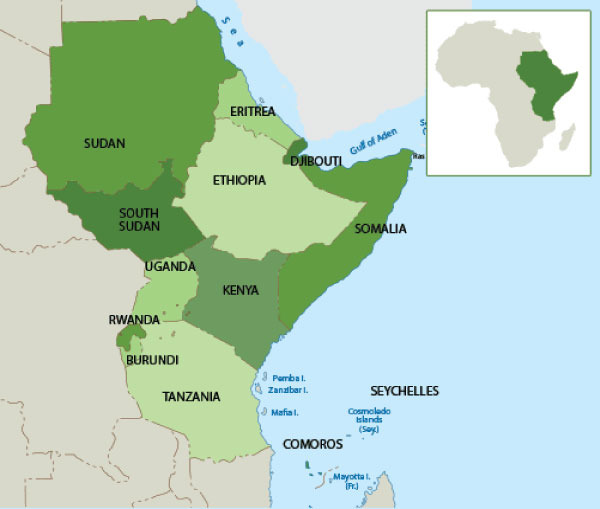Geography and Location
General Overview
Trinidad and Tobago is located in the southern Caribbean Sea, northeast of Venezuela and south of Grenada. The nation consists of two main islands, Trinidad and Tobago, along with several smaller islands.
Trinidad
Trinidad, the larger of the two islands, spans approximately 4,768 square kilometers. It is geographically diverse, featuring mountain ranges, plains, and numerous rivers. The Northern Range, a mountain range running along the north coast, includes the country’s highest peak, El Cerro del Aripo, which stands at 940 meters.
Tobago
Tobago, the smaller island, covers about 300 square kilometers. Known for its coral reefs and clear blue waters, Tobago is a popular destination for tourists seeking natural beauty and marine life. The island features the Main Ridge, the oldest protected rainforest in the Western Hemisphere.
Climate
Trinidad and Tobago enjoys a tropical climate with two distinct seasons: the dry season from January to May and the wet season from June to December. The average temperature ranges between 24°C and 32°C. Despite its tropical climate, the islands are outside the hurricane belt, making severe storms rare.
Maps
Political Map
A political map of Trinidad and Tobago highlights the boundaries of the various administrative regions and major cities. Trinidad is divided into 14 municipalities, while Tobago is governed by the Tobago House of Assembly.
Physical Map
A physical map illustrates the geographic features of the islands, including mountain ranges, rivers, and plains. The Northern Range, Central Range, and Southern Range are prominent on Trinidad, while the Main Ridge is the key feature on Tobago.
Fun Fact
Trinidad is home to Pitch Lake, the world’s largest natural deposit of asphalt. This lake spans about 40 hectares and contains around 10 million tons of asphalt.
Demographics
Population
As of 2023, Trinidad and Tobago has an estimated population of 1.4 million people. The population is diverse, reflecting a mix of ethnic backgrounds including African, East Indian, European, Chinese, and Middle Eastern descent.
Ethnic Groups
- Indo-Trinidadians: Approximately 37% of the population, descendants of indentured laborers from India.
- Afro-Trinidadians: Around 36%, descendants of African slaves brought to work on plantations.
- Mixed: About 24% of the population.
- Other: Including Europeans, Chinese, and Middle Eastern, comprising roughly 3%.
Languages
English is the official language of Trinidad and Tobago. However, Trinidadian Creole English and Tobagonian Creole English are widely spoken. Hindi, French, Spanish, and Chinese are also spoken among the diverse ethnic communities.
Religion
The country is religiously diverse, with major religions including Christianity, Hinduism, and Islam. The Roman Catholic Church is the largest single denomination, followed by the Hindu and Muslim communities.
Fun Fact
Trinidad and Tobago is one of the few countries where the Hindu festival of Diwali is a public holiday.
History
Pre-Colonial Period
The islands were originally inhabited by indigenous peoples, including the Arawaks and Caribs. These groups lived on the islands for centuries before the arrival of European explorers.
Colonial Era
Christopher Columbus
In 1498, Columbus reached Trinidad on his third voyage to the New World, claiming it for Spain.
British Rule
Trinidad remained under Spanish control until 1797, when it was captured by the British. Tobago changed hands among the Spanish, Dutch, French, and British before being ceded to Britain in 1814.
Unification
Trinidad and Tobago were administratively unified in 1889.
Independence
Trinidad and Tobago gained independence from Britain on August 31, 1962. The country became a republic within the Commonwealth in 1976, with a president as head of state.
Fun Fact
Eric Williams, the first Prime Minister of Trinidad and Tobago, is often referred to as the “Father of the Nation.” He played a pivotal role in leading the country to independence.
Economy
Overview
Trinidad and Tobago has one of the wealthiest economies in the Caribbean, primarily due to its extensive oil and natural gas reserves. The energy sector is the backbone of the economy, contributing significantly to GDP and export revenues.
Key Sectors
Energy
The country is a major exporter of liquefied natural gas (LNG), petroleum, and petrochemicals. It is the largest LNG exporter in the Western Hemisphere.
Manufacturing
Includes food and beverage production, chemicals, and steel.
Tourism
Particularly important for Tobago, attracting visitors to its beaches, coral reefs, and eco-tourism sites.
Agriculture
Includes the cultivation of cocoa, sugar, and coffee, although this sector has declined in recent years.
Trade
Trinidad and Tobago’s major trading partners include the United States, Canada, the European Union, and CARICOM countries. The country imports machinery, transportation equipment, manufactured goods, and food products.
Fun Fact
Trinidad and Tobago is the birthplace of steelpan music, with the steel drum being the only musical instrument invented in the 20th century.
Culture
Festivals
Carnival
The most famous festival in Trinidad and Tobago, celebrated on the Monday and Tuesday before Ash Wednesday. It features elaborate costumes, music, dance, and parades.
Diwali
A major Hindu festival celebrated with lights, prayers, and feasts.
Hosay
An Islamic festival commemorating the martyrdom of Imam Husayn, celebrated with processions and music.
Music
Trinidad and Tobago is known for its vibrant music scene, particularly calypso, soca, and chutney music. The steelpan, invented in Trinidad, is a central instrument in these genres.
Cuisine
The cuisine reflects the diverse cultural heritage, combining African, Indian, European, and Chinese influences. Popular dishes include roti, doubles, pelau, callaloo, and bake and shark.
Fun Fact
The limbo dance, often associated with Caribbean culture, originated in Trinidad.
Government and Politics
Political System
Trinidad and Tobago is a parliamentary democracy modeled after the British system. It has a bicameral legislature consisting of the House of Representatives and the Senate.
Executive Branch
The President is the head of state, while the Prime Minister is the head of government. The President appoints the Prime Minister, who is usually the leader of the majority party in the House of Representatives.
Judicial System
The judiciary is independent, with the highest court being the Supreme Court, consisting of the Court of Appeal and the High Court.
Administrative Divisions
Trinidad is divided into 14 municipalities, while Tobago has its own House of Assembly responsible for local governance.
Fun Fact
The Prime Minister’s official residence, known as the Diplomatic Centre, is located in St. Ann’s, Port of Spain.
Maps of Trinidad and Tobago
Political Map
A political map of Trinidad and Tobago shows the administrative boundaries, major cities, and towns. Key cities include
- Port of Spain: The capital city, located on the northwest coast of Trinidad.
- San Fernando: The second-largest city, located in the south of Trinidad.
- Scarborough: The capital of Tobago.
Physical Map
A physical map highlights the geographic features of the islands. Key features include
- Northern Range: A mountain range in Trinidad running along the north coast.
- Central Range: A series of hills in central Trinidad.
- Southern Range: A range of low mountains in southern Trinidad.
- Main Ridge: A range of hills in Tobago, home to the oldest protected rainforest.
Climate Map
A climate map depicts the various climatic zones of the islands, from tropical rainforest to tropical savannah climates.
Fun Fact
The island of Gaspar Grande, located off the northwest coast of Trinidad, is home to the famous Gasparee Caves, known for their stunning limestone formations and crystal-clear pools.
Education
System Overview
Education in Trinidad and Tobago is free and compulsory for children between the ages of 5 and 16. The system is divided into primary, secondary, and tertiary levels.
Primary and Secondary Education
Primary education lasts for seven years, followed by five years of secondary education. Students take the Secondary Entrance Assessment (SEA) to transition from primary to secondary school.
Tertiary Education
The country has several tertiary institutions, including the University of the West Indies (UWI) St. Augustine campus, the University of Trinidad and Tobago (UTT), and the College of Science, Technology and Applied Arts of Trinidad and Tobago (COSTAATT).
Fun Fact
Trinidad and Tobago has one of the highest literacy rates in the Caribbean, with over 98% of the population being literate.
Healthcare
System Overview
Trinidad and Tobago has a well-developed healthcare system, providing both public and private healthcare services. The government operates a network of hospitals and health centers across the islands.
Public Healthcare
Public healthcare is funded by the government and provides free or low-cost services to residents. Major public hospitals include the Port of Spain General Hospital, San Fernando General Hospital, and Tobago Regional Health Authority.
Private Healthcare
Private healthcare services are available for those who prefer or can afford them. These services are known for shorter waiting times and more personalized care.
Fun Fact
The Eric Williams Medical Sciences Complex, located in Mount Hope, is one of the leading medical facilities in the Caribbean, offering advanced medical treatments and research opportunities.
Tourism
Attractions
Trinidad and Tobago offers a wide range of attractions for visitors, from beautiful beaches to historical sites and vibrant festivals.
Beaches
- Maracas Bay: One of Trinidad’s most famous beaches, known for its scenic beauty and bake and shark stalls.
- Pigeon Point: A popular beach in Tobago, famous for its white sands and clear waters.
Natural Attractions
- Pitch Lake: The largest natural deposit of asphalt in the world, located in La Brea, Trinidad.
- Asa Wright Nature Centre: A renowned bird-watching spot in the Northern Range of Trinidad.
- Nylon Pool: A shallow area in the middle of the sea off the coast of Tobago, known for its crystal-clear waters.
Historical Sites
- Fort George: A historic fort in Port of Spain offering panoramic views of the city and Gulf of Paria.
- Fort King George: A well-preserved fort in Scarborough, Tobago, with a museum and beautiful views of the island.
Events and Festivals
- Carnival: Celebrated on the Monday and Tuesday before Ash Wednesday, featuring colorful parades, costumes, music, and dance.
- Tobago Jazz Experience: An annual music festival attracting international and local artists.
- Divali: The Hindu festival of lights, celebrated with prayers, feasts, and light displays.
Fun Fact
Trinidad and Tobago is home to the world-famous Buccoo Reef, a protected marine park offering snorkeling and glass-bottom boat tours.
Transportation
Road Network
Trinidad and Tobago has an extensive road network, with major highways connecting cities and towns. The most important roads include the Churchill-Roosevelt Highway and the Solomon Hochoy Highway in Trinidad.
Public Transport
Public transportation is widely available, including buses, maxi-taxis (shared vans), and route taxis. The Public Transport Service Corporation (PTSC) operates a network of buses across the islands.
Airports
- Piarco International Airport: Located in Trinidad, serving as the main international gateway.
- A.N.R. Robinson International Airport: Located in Tobago, handling both domestic and international flights.
Ports
The country has several major ports, including the Port of Port of Spain and the Port of Point Lisas in Trinidad, and the Port of Scarborough in Tobago.
Fun Fact
Trinidad and Tobago’s water taxi service offers a scenic and efficient way to travel between Port of Spain and San Fernando.
Commonly Asked Questions
What is the capital of Trinidad and Tobago?
The capital of Trinidad and Tobago is Port of Spain, located on the northwest coast of Trinidad.
What languages are spoken in Trinidad and Tobago?
The official language is English, but Trinidadian Creole English and Tobagonian Creole English are widely spoken. Other languages include Hindi, French, Spanish, and Chinese.
When is the best time to visit Trinidad and Tobago?
The best time to visit is during the dry season from January to May, when the weather is warm and sunny with low humidity.
What is the currency of Trinidad and Tobago?
The currency is the Trinidad and Tobago dollar (TTD).
How safe is Trinidad and Tobago for tourists?
Trinidad and Tobago is generally safe for tourists, but it is advisable to take standard precautions, especially in urban areas and at night.
What is the main airport in Trinidad and Tobago?
Piarco International Airport in Trinidad is the main international airport, while A.N.R. Robinson International Airport in Tobago handles both domestic and international flights.
What are the must-see attractions in Trinidad and Tobago?
Must-see attractions include Maracas Bay, Pigeon Point, Pitch Lake, Asa Wright Nature Centre, Fort George, and Buccoo Reef.
Can I use US dollars in Trinidad and Tobago?
While the official currency is the Trinidad and Tobago dollar, US dollars are widely accepted in hotels, restaurants, and tourist areas.
What is the driving age in Trinidad and Tobago?
The legal driving age is 18 years old.
Do I need a visa to visit Trinidad and Tobago?
Visa requirements vary by country. Citizens of many countries, including the United States, Canada, and the United Kingdom, do not need a visa for short stays. It’s best to check with the Trinidad and Tobago consulate or embassy in your country.
Is tap water safe to drink in Trinidad and Tobago?
Tap water is generally safe to drink in most areas, but it is recommended to drink bottled or filtered water, especially in rural areas.
What is the time zone of Trinidad and Tobago?
Trinidad and Tobago is in the Atlantic Standard Time (AST) zone, which is 4 hours behind Coordinated Universal Time (UTC-4).
Are there any famous festivals in Trinidad and Tobago?
Yes, the most famous festival is Carnival, celebrated on the Monday and Tuesday before Ash Wednesday. Other notable festivals include Divali, Hosay, and the Tobago Jazz Experience.
- The Red Scare And McCarthyism In The USA! - August 19, 2024
- The Elite Special Forces Of Ancient Greece! - August 18, 2024
- Which US State Has The Most Venomous Reptiles? - August 18, 2024





